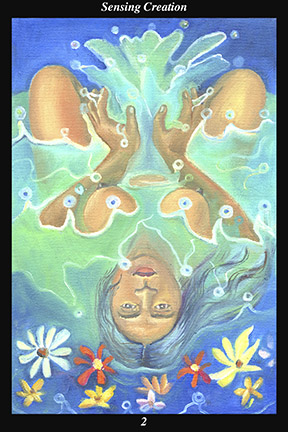The word psyche means both soul and butterfly.
The concept of a world soul arose among ancient philosophers and endures in the heart-mind of many modern people. It was expounded by Plato for one, and can be found in many other belief systems throughout history, up to the present where it appears as the Gaia principle.
In this sense, the physical world is perceived to have a soul or spirit no less than we human beings have. In the same way, moreover, that “the world” is actually all the things within it, including human beings, “the world soul” is actually all the individual souls within it, including human beings. But where does this concept come from—and what does it have to do with a world butterfly?
As to the first point: The world soul does not originate as a thought but, rather, as a sensation. It is the inevitable result of nature mysticism, of lives so thoroughly immersed in the natural world that they can sense the one soul of which they are a part and experience their unity with it consciously. This unifying experience of the underlying reality is what gives rise to the spiritual perceptions and practices known as animism and shamanism.
In The Toltec I Ching, Martha Ramirez-Oropeza and I make the point that people differ only in the degree of their sensitivity to the one soul. Here is an excerpt from Hexagram 2, Sensing Creation—

Image: A female warrior is naked, immersed in water and surrounded by flowers. A wellspring of water rises from between her hands. The water drops are drawn as beads of jade in order to portray the precious nature of that which sustains life.
Interpretation: This hexagram represents the great courage essential to creating a meaningful life. The female warrior symbolizes the way of nurturing and encouraging human nature that increases its sensitivity and loving-kindness. Being naked means that nothing stands between you and the world. Being immersed in water means that you plunge whole-heartedly into the spirit of that which nurtures all. Being surrounded by flowers means that you perceive the perfection of the world as it truly is: each moment blossoms perfect and whole, then passes like a fading flower—each perfection born into the world must die. The wellspring of water symbolizes the inexhaustible source of courage that allows you to use your awareness of mortality to more profoundly experience the joy and sorrow inherent within every encounter. In this sense, the flowers and the water signify not only the wisdom attained through experience, but the aesthetic sensibilities to be moved by a beauty and truth not always apparent to others. Taken together, these symbols mean that you open your spirit to the overwhelming perfection of the world and share your vision with all you touch.
Keeping in mind that every individual is a spirit warrior with a feminine and masculine half, the formula for increasing our sensitivity to the unseen world soul can be phrased like this: The feminine half of the spirit warrior collects the movement and energy of the unseen forces, calming them and bringing them together in harmony, making a place for them to gather strength and then making that source of benefit open and available to all.
This calming of the spirit in order to make a place, much like a womb, for the world soul to gestate in stillness and then be born in acts of benefit is an age-old formula by which men and women across cultures have attained states of profound bliss and meaningful success.
As to the second point: The world psyche, like the individual human psyche, grows and evolves without limit. Its only constant is one of change, always seeking further refinement and a higher order of universal benevolence. Its only unchanging law is that of unending metamorphosis—what better symbol of our collective spiritual metamorphosis than the world butterfly?
~
The Toltec I Ching, by Martha Ramirez-Oropeza and William Douglas Horden has just been released by Larson Publications. It recasts the I Ching in the symbology of the Native Americans of ancient Mexico and includes original illustrations interpreting each of the hexagrams. Its subtitle, 64 Keys to Inspired Action in the New World hints at its focus on the ethics of the emerging world culture.
